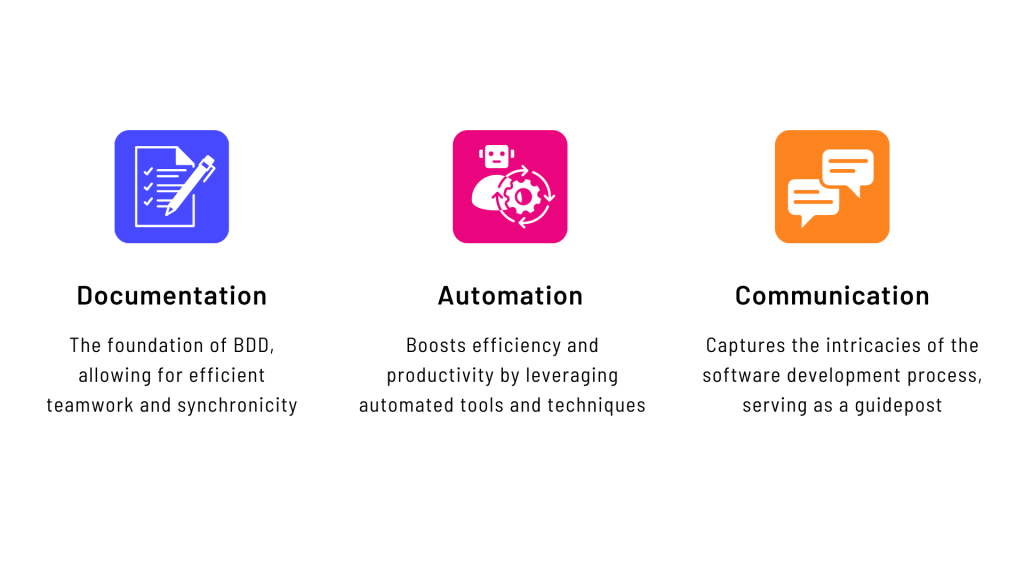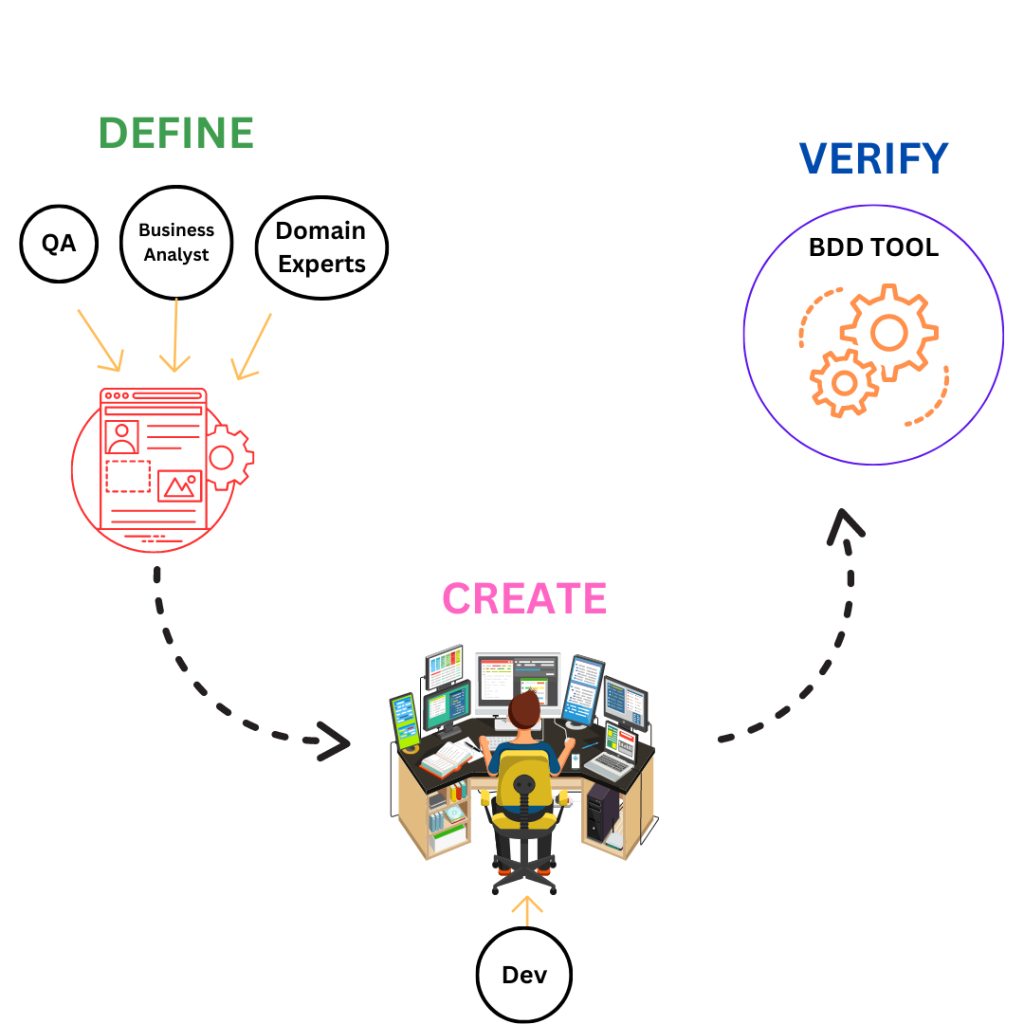A Beginner’s Guide to Behavior-Driven Development (BDD)
In the fast-paced realm of software development, efficient protocols are crucial for top-notch solutions. Behavior-Driven Development (BDD) is a popular methodology that emphasizes teamwork, communication, and clarity. In this blog we will explore BDD’s fundamental concepts and its benefits in crafting user-oriented software solutions. Join me as I delve into the world of BDD and its transformative power in software development.
Introduction
What is BDD?
When it comes down to it, Behavior-Driven Development (BDD) is a method for developing software that places an intense focus on communication between stakeholders, such as business analysts, developers, testers, and clients. By adopting a broadly recognized language, BDD seeks to eradicate disparities in communication between technical and non-technical team members.

The Three Pillars of BDD
The three key pillars of BDD are documentation, automation, and communication. These pillars serve as the BDD’s core principles and help teams design software that addresses user needs, promotes corporate objectives, and upholds the highest expectations of quality.

The BDD Process
- Defining Business Goals: Clearly defining business objectives and user narratives is the first phase in BDD. User stories characterize the individual aspects from the user’s perspective, whereas business goals define the long-term goals of the software project. The envisioned characteristics of the software are set forth using these user narratives as the foundation.
- Writing Executable Specifications: Requirements for BDD are defined in Gherkin, a structured and user-friendly language. The domain-specific language Gherkin uses Given-When-Then assertions, which have a straightforward syntax, for defining behavior. These requirements act as ongoing documentation and can be utilized by the entire team as a guide.
- Automated Testing: In BDD, automated testing is vital. The team ensures that the software behaves exactly as intended by automating tests based on the defined requirements. Such tests are possible to run with the help of test automation frameworks like Cucumber which also generates insightful reports about the behavior of the respective software.
- Collaboration and Continuous feedback: In BDD, cooperation is crucial. Team discussions and meetings on a regular schedule aid in establishing requirements, recognizing possible complications, and enhancing the behavior of the software. The software continually evolves to meet emerging business requirements as a result of periodic feedback loops.

Key Benefits
01
Stronger Collaboration
Product owners, developers, domain experts, and testers all have in-depth knowledge of the project’s development.
02
Customer Centric
BDD focuses on user stories and expected behaviors, thereby ensuring that the software meets the requirements of the end-users.
03
Improved Quality
By recognizing bugs early, BDD reduces rework, enhances software quality, and ensures time efficiency and resource allocation.
Conclusion
In summary, Behavior-Driven Development (BDD) presents a formidable and dynamic methodology for software development that harmonizes with business objectives, fosters collaboration, and culminates in customer-centric solutions. By placing utmost importance on effective communication, automation, and comprehensive documentation, BDD empowers teams to forge robust software products while minimizing rework and elevating overall quality. Embracing BDD has the potential to revolutionize the software development process, fostering a culture of collaboration, clarity, and perpetual growth.
Watch out for my next blog to know more about BDD and its frameworks





